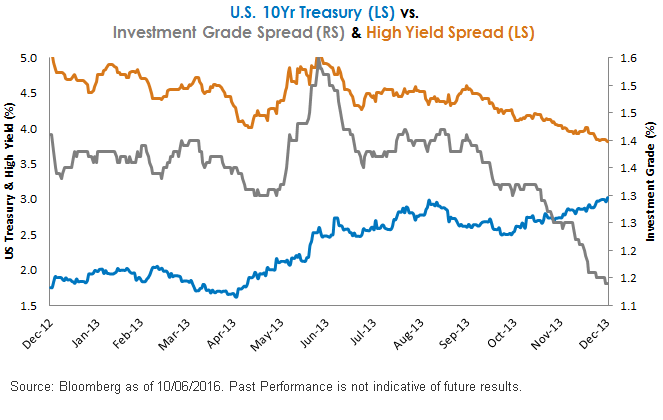Central Bank Watch: Euro-Taper?


Don’t look now, but the calendar has turned, once again, to central bank season. The European Central Bank (ECB) is slated to kick things off tomorrow with its formal policy session and will be followed by the Bank of Japan and the Fed during the first week of November (the week before the U.S. presidential election, for those keeping track).
The last ECB meeting in September was met with disappointment in the fixed income markets, as the Euro-based policy makers left things unchanged. Prior to that convocation, there were expectations the ECB might implement either a further move into negative rate territory or an extension of its quantitative easing (QE) program, or at the very least hint that such moves could be forthcoming. Alas, investors were left empty-handed.
So, what are the money and bond markets looking for this time around? While expectations still seem to lean toward a QE-extension announcement before year-end, a new wrinkle has been added to the discussion. Indeed, reports have recently surfaced suggesting that ECB officials are building a consensus to potentially go down the tapering road as the current March 2017 deadline for their QE program draws nearer. Specifically, ECB officials are considering reducing their asset purchases by about €10 billion per month in order to avoid an abrupt ending to their €80 billion purchases come March of next year. Any decision to taper would be contingent upon there being no QE extension and on the economic/inflation outlook for the eurozone. Interestingly, it was also noted that this apparent consensus building did not exclude the possibility that QE could still be extended by the full €80 billion per month.
U.S. 10-Year Treasury (LS) vs. Investment-Grade Spread (RS) & High-Yield Spread (LS)

If the ECB were to go down the taper route at some point, it would be taking a page out of the Fed’s playbook. As a reminder, the Fed’s 2013 “taper tantrum” had its genesis in May of that year at an appearance before the Joint Economic Committee of Congress when then-Chairman Bernanke first broached the idea publicly. This was followed on a more “formal” basis following the June 2013 FOMC meeting at the Bernanke presser. The actual tapering, or reduced pace of monthly asset purchases, wasn’t announced until the December 2013 gathering.
We thought it would be useful to offer a refresher as to how the U.S. rate and credit markets reacted throughout that process. The U.S. Treasury (UST) 10-Year yield finished 2012 at 1.76%, and at one point in early May 2013 had dropped to 1.63%. However, after Bernanke’s first taper mention, the yield moved over the 2% threshold and kept moving higher following the aforementioned June FOMC meeting. A brief rally ensued when the Fed failed to taper by September, but the yield ultimately finished 2013 at its most recent peak of 3.03%.
For credit, within investment grade (IG) and high yield (HY), spreads narrowed through May but reversed course and hit their 2013 highs a week after the June Fed meeting. To provide some perspective, IG spreads widened by 25 basis points (bps) with HY moving out roughly 100 bps. After that bout of market anxiety, the stage appeared to be set for a visible rally in credit, as IG and HY spreads compressed by 41 bps and 128 bps, respectively, to end 2013.
Conclusion
Following the aforementioned report of the ECB building a taper consensus, we did see a response in the rates markets, as the UST and German bund 10-Year yields each rose by roughly 10 bps in the days that immediately followed. Within the U.S. credit sector, spreads were little changed if a bit narrower. There seems to be little doubt that central bank headlines have, yet again, moved front and center and will more than likely remain there going forward. Against this backdrop, investors could witness a heightened sense of volatility in the fixed income markets.
Unless otherwise noted, data source is Bloomberg, as of 10/10/2016.


